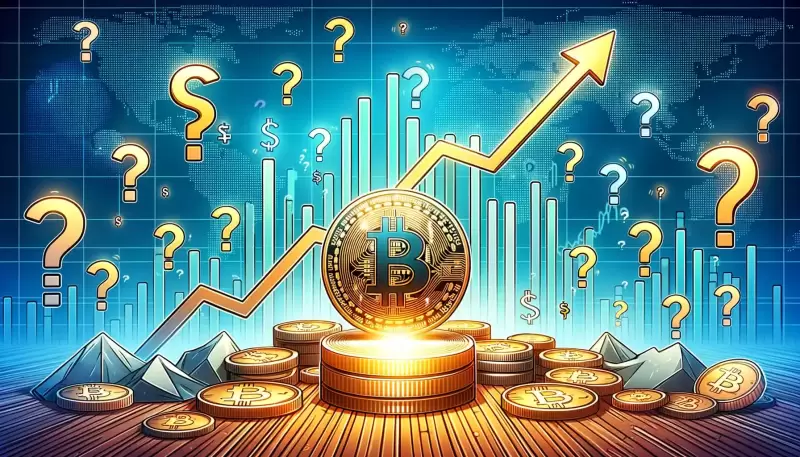 |
|
 |
|
 |
|
 |
|
 |
|
 |
|
 |
|
 |
|
 |
|
 |
|
 |
|
 |
|
 |
|
 |
|
 |
|
暗号通貨のニュース記事
Aave、Dydx、Jupiter、Hyperliquidなどの多くの暗号通貨プロジェクトは、最近トークンの買い戻しメカニズムを発表しました。
2025/03/19 16:00
Crypto Projectsが市場からトークンを買い戻すと、トークンの買い戻しが発生します。これらの買い戻されたトークンは、保護区として保持されたり、燃やされたりすることさえできます。

Recently, several cryptocurrency projects, including Aave, dYdX, Jupiter, and Hyperliquid, have announced token buyback mechanisms.
最近、Aave、Dydx、Jupiter、Hyperliquidを含むいくつかの暗号通貨プロジェクトがトークンの買い戻しメカニズムを発表しました。
Traditional stock markets inspire the token buyback strategy. But does this strategy help crypto projects build a sustainable economic model and contribute to increasing the price of their tokens?
従来の株式市場は、トークンの買い戻し戦略を刺激します。しかし、この戦略は、暗号プロジェクトが持続可能な経済モデルを構築し、トークンの価格の上昇に貢献するのに役立ちますか?
The Booming of Crypto Projects’ Token Buyback Programs
Crypto Projectsのトークンバックプログラムの活況
Token buybacks occur when crypto projects repurchase their tokens from the market. These repurchased tokens can be held as reserves or even burned. In theory, buybacks reduce circulating supply, creating scarcity, which may drive up token prices.
Crypto Projectsが市場からトークンを買い戻すと、トークンの買い戻しが発生します。これらの買い戻されたトークンは、保護区として保持されたり、燃やされたりすることさえできます。理論的には、買い戻しは循環供給を減らし、希少性を生み出し、価格を引き上げる可能性があります。
Although not a new strategy, BeInCrypto has observed that this trend is rapidly expanding.
新しい戦略ではありませんが、Beincryptoはこの傾向が急速に拡大していることを観察しています。
For example, in early March 2025, the lending protocol Aave (AAVE) announced the implementation of a new Aavenomics. Aave will repurchase tokens to reduce supply and shift from staking rewards to a more sustainable liquidity model. This included a weekly AAVE token buyback worth $1 million for six months, funded by protocol fees.
たとえば、2025年3月上旬、貸出プロトコルAave(Aave)は、新しいAavenomicsの実装を発表しました。 Aaveはトークンを買い戻して、供給を減らし、報酬を浸したものからより持続可能な流動性モデルに移行します。これには、プロトコル料金で資金提供された6か月間、100万ドル相当の毎週のAaveトークンの買い戻しが含まれていました。
In an ideal scenario, this buyback plan could reach a total value of $100 million (3% of the circulating supply).
理想的なシナリオでは、この買い戻し計画は合計1億ドル(流通供給の3%)に達する可能性があります。
“We consider it the most important proposal in our history, feel free to have a read and provide feedback,” said Marc Zeller, founder of the Aave Chan Initiative (ACI).
「私たちはそれを私たちの歴史の中で最も重要な提案と考えています。自由に読んでフィードバックを提供してください」と、Aave Chanイニシアチブ(ACI)の創設者であるMarc Zellerは述べています。
Also in March, the decentralized exchange (DEX) dYdX approved “Proposal #225” to buy back DYDX tokens. The protocol will use platform revenue for the buyback.
また、3月には、分散型取引所(DEX)DYDXが「提案#225」を承認し、Dydxトークンを買い戻しました。プロトコルは、買い戻しにプラットフォームの収益を使用します。
Other crypto projects like Hyperliquid (HYPE) and Jupiter (JUP) have similar plans. Estimates suggest Hyperliquid will repurchase $600 million worth of tokens annually, using 50-100% of transaction fees. This protocol dominates decentralized finance (DeFi) despite the market downturn.
Hyperliquid(Hype)やJupiter(JUP)などの他の暗号プロジェクトには、同様の計画があります。推定によると、Hyperliquidは、50〜100%の取引手数料を使用して、毎年6億ドル相当のトークンを買い戻すことが示唆されています。このプロトコルは、市場の低迷にもかかわらず、分散型財務(DEFI)を支配しています。
Jupiter has committed to using 50% of fees for buyback, estimated at $250 million annually. Recently, this project surpassed Raydium and became Solana’s second-largest protocol.
Jupiterは、年間2億5,000万ドルと推定される買い戻しのために50%の料金を使用することを約束しています。最近、このプロジェクトはレイディウムを上回り、ソラナで2番目に大きいプロトコルになりました。
These are just a few of the most typical crypto projects. Many other projects, including Gnosis, Gains Network, and Arbitrum, employ similar strategies. So, could this reshape the current cryptocurrency market?
これらは、最も典型的な暗号プロジェクトのほんの一部です。 Gnosis、Gains Network、Arbitrumなどの他の多くのプロジェクトは、同様の戦略を採用しています。それで、これは現在の暗号通貨市場を再構築することができますか?
What’s Driving This Token Buyback Trend?
このトークンの買い戻しの傾向を推進しているのは何ですか?
Discussing this buyback strategy, an X (formerly Twitter) user commented:
この買い戻し戦略について議論すると、X(以前のTwitter)のユーザーがコメントしました:
“Buybacks create steady demand and reduce circulating supply, which can stabilize or even increase token prices.” commented Capitanike.
「買い戻しは安定した需要を生み出し、循環供給を減らします。これにより、トークンの価格が安定したり増加したりする可能性があります。」 Capitanikeにコメントした。
The fundamental economic principle of supply and demand is the key driver. By reducing circulating supply, crypto projects aim to increase token scarcity, which could push prices higher. According to SolanaFloor, projects with token buyback programs outperformed those without buybacks by 46.67% in 2024 (-0.6% vs. -47.15% YTD).
需要と供給の基本的な経済原則が重要な推進力です。循環供給を減らすことにより、暗号プロジェクトはトークンの希少性を高めることを目指しており、価格を高くすることができます。 Solanafloorによると、トークンの買い戻しプログラムを備えたプロジェクトは、2024年に買い戻しなしで46.67%(-0.6%対-47.15%YTD)よりも優れていました。
Secondly, the buyback can signal strong financial health for crypto projects. This is particularly effective in reassuring investors amid market volatility.
第二に、この買い戻しは、暗号プロジェクトの強力な財務的健康を示すことができます。これは、市場のボラティリティの中で投資家を安心させるのに特に効果的です。
Thirdly, unlike the token burn strategy, many projects (such as AAVE and Gains Network) redistribute repurchased tokens to stakers or holders, aligning incentives. This approach could indicate the maturity of a project’s tokenomics model over time.
第三に、トークンバーン戦略とは異なり、多くのプロジェクト(AaveやGains Networkなど)は、買い戻しトークンをステイカーまたはホルダーに再配分し、インセンティブを調整します。このアプローチは、プロジェクトのトークノミクスモデルの経時的な成熟度を示している可能性があります。
However, token buybacks are not without weaknesses. As this strategy becomes more widespread, regulators like the SEC may scrutinize it for potential manipulation or illicit activities.
ただし、トークンの買い戻しには弱点がないわけではありません。この戦略がより広くなると、SECのような規制当局は、潜在的な操作や違法な活動のためにそれを精査する可能性があります。
Additionally, an improperly calculated buyback strategy could overly reduce token supply. If a project fails to balance new issuance or staking rewards, it might suffer from decreased trading volume. Moreover, buybacks could potentially mask financial weaknesses.
さらに、不適切に計算された買い戻し戦略は、トークンの供給を過度に減らすことができます。プロジェクトが新しい発行や利益のバランスを取らない場合、取引量の減少に悩まされる可能性があります。さらに、買い戻しは潜在的に経済的な弱点を隠す可能性があります。
“What’s more plausible, in our opinion, is that these buybacks serve as proof that the projects raised too much during their ICO, are failing to develop anything useful, and don’t know what to do with their cash balances…” TokenData Research report.
「私たちの意見では、もっともっともらしいのは、これらの買い戻しは、ICOの間にプロジェクトがあまりにも多くのことを提起し、有用なものを開発できず、現金残高をどうするかわからないという証拠として役立つということです...」Tokendata Research Report。
The recent surge in crypto projects adopting token buybacks marks a significant evolution in tokenomics. While buybacks can enhance price stability, investor confidence, and ecosystem growth, they also carry manipulation risks and regulatory problems.
トークンの買い戻しを採用している暗号プロジェクトの最近の急増は、トークノミクスの重要な進化を示しています。買い戻しは価格の安定性、投資家の信頼、生態系の成長を高めることができますが、操作のリスクや規制上の問題もあります。
免責事項:info@kdj.com
提供される情報は取引に関するアドバイスではありません。 kdj.com は、この記事で提供される情報に基づいて行われた投資に対して一切の責任を負いません。暗号通貨は変動性が高いため、十分な調査を行った上で慎重に投資することを強くお勧めします。
このウェブサイトで使用されているコンテンツが著作権を侵害していると思われる場合は、直ちに当社 (info@kdj.com) までご連絡ください。速やかに削除させていただきます。
-

-

-

-

-

-

-

-

-

- ビットコイン(BTC)の価格は、86,500ドルのゾーンを徐々に上回っています。
- 2025-04-21 13:00:13
- BTCはペースを上げており、短期的にはより高く続く可能性があります。

























































